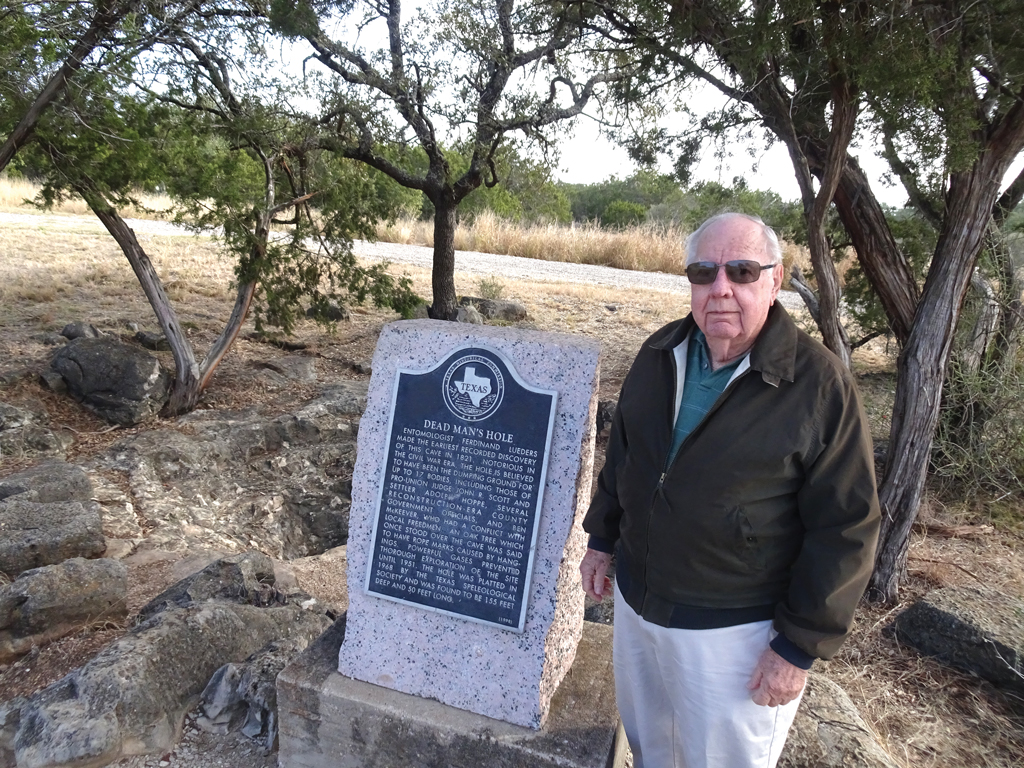Unraveling the Myth of Dead Man’s Hole: A Historical Revision
Deep in the heart of Texas, nestled amidst the rolling hills of Burnet County, lies a natural wonder shrouded in mystery and misinformation – Dead Man’s Hole. This vertical cave, a gaping maw in the earth, has long been the subject of local lore and historical inaccuracies, its true origins obscured by a persistent myth perpetuated on a Texas State Historical Marker and within the esteemed pages of The Handbook of Texas. Both sources erroneously attribute the cave’s discovery in 1821 to a German entomologist named Ferdinand Lueders, a claim now debunked by meticulous historical research. Furthermore, the widely accepted explanation of the cave’s formation as a result of gas pressure is also geologically unsound. The reality, as geological evidence suggests, is that Dead Man’s Hole, like many other caves in the region, including the famed Longhorn Cavern, owes its existence to the patient, persistent erosion of limestone bedrock by water over millennia.
The genesis of this historical fallacy can be traced to "History of Burnet County, Vol. 1," a 1979 publication edited by Darrell Debo. Within its pages, a chapter penned by Mary Alice Fuller and Iva Fuller weaves a compelling, yet ultimately fabricated, narrative of Lueders’ discovery. According to their account, Lueders, employed by the Englishman James Smithson to explore uncharted territories, stumbled upon the cave near the "Great Falls" in 1821. Their story depicts Lueders, captivated by the nocturnal dance of insects, using candlelight to attract his subjects, only to be drawn to the ominous sound of insects seemingly plummeting into a hidden abyss. The following morning, the tale continues, Lueders uncovered what would later be known as Dead Man’s Hole. This romanticized account, while captivating, lacks any credible supporting evidence.
Adding to the intrigue, the Fullers claimed Lueders documented his findings in a book later translated into English and housed within the University of Texas at Austin Library System. However, extensive searches by entomologist Dr. Horace Burke and other researchers have failed to unearth any trace of such a book. The Fullers’ assertion of Lueders’ encounter with a settler family named Benson near present-day Marble Falls in 1821 is equally unsubstantiated. Historical records confirm that the Marble Falls area remained uninhabited by Europeans at that time, predating even Stephen F. Austin’s arrival with the "Old Three Hundred" in 1823. Independent research by university professors specializing in early German settlements in Texas has further confirmed the absence of any record of a Ferdinand Lueders in the region during that period.
The truth regarding Ferdinand Lueders is far removed from the myth surrounding Dead Man’s Hole. Records reveal that a young German immigrant bearing that name did arrive in Texas, but not until 1836. He played a role in the Battle of San Jacinto and tragically succumbed to illness shortly after in Galveston, the same year he set foot on Texan soil. He never ventured into Central Texas or Burnet County, making his purported discovery of the cave geographically impossible. Furthermore, Lueders was not an entomologist, further dismantling the fabricated narrative. While Lueders did receive land grants for his service in the Texas Revolution, these were awarded posthumously and eventually inherited by his relatives in Germany.
The Fullers’ error likely stems from a conflation of Lueders with other prominent German scientists active in Central Texas during that era, namely Ferdinand Lindheimer, a renowned botanist who participated in the Texas Revolution, and Ferdinand Roemer, a geologist whose work in the region is well documented. However, neither of these individuals ever explored the Marble Falls area. Roemer’s 1852 publication on Texas geology, later translated into English, is available in the University of Texas at Austin Libraries, a possible source of confusion for the Fullers.
The misinformation surrounding Dead Man’s Hole’s discovery is not merely an academic curiosity. The perpetuation of this myth on a historical marker and in a respected reference work like The Handbook of Texas lends it an undeserved air of authenticity, leading to its frequent repetition in various media, including newspaper articles, local publications, and online platforms. This widespread dissemination makes correcting the historical record a challenging undertaking.
Rectifying this historical inaccuracy requires a concerted effort. The Texas Historical Commission, recognizing the possibility of errors on existing markers, offers a mechanism for correction and the issuance of revised markers at no cost to local historical commissions. In the case of Dead Man’s Hole, the Burnet County Historical Commission has a responsibility to pursue this avenue of correction. Concurrent with this effort, The Handbook of Texas should be updated to reflect the accurate historical narrative.
This historical revision underscores the critical importance of rigorous research and verification in the preservation and dissemination of historical information. It serves as a cautionary tale against the uncritical acceptance of historical narratives, highlighting the need for continuous scrutiny and the willingness to challenge established “facts,” especially when they lack a solid evidentiary foundation. The true story of Dead Man’s Hole, while devoid of the romanticized discovery attributed to Ferdinand Lueders, remains a fascinating testament to the power of geological forces and a stark reminder of a turbulent chapter in Texas history. The cave’s more accurate moniker, Burnam’s Hole, after landowner and Texas Revolution hero J.H. Burnam, deserves to be restored. The subsequent discovery of human remains within the cave after the Civil War, believed to be victims of Confederate sympathizers, adds a somber layer to its history, emphasizing the importance of accurate historical preservation to honor the memory of those who perished.


